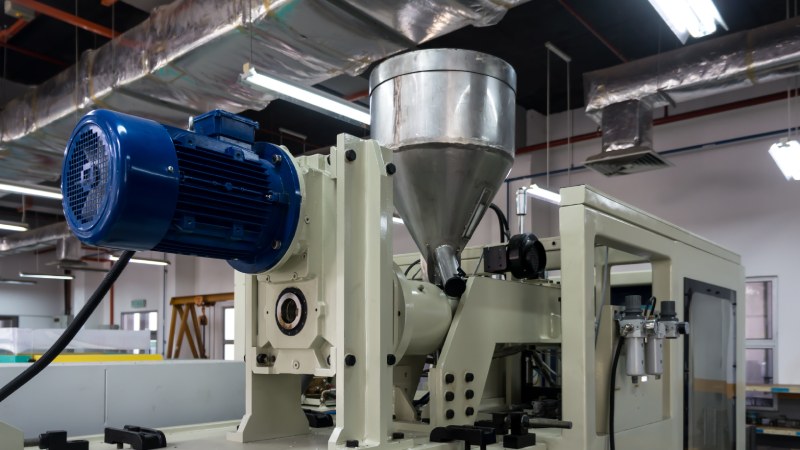Injection molding is a manufacturing process by which plastic parts are formed under heat and pressure using a mold cavity. This guide will give you answers to any questions you have if you have ever wondered how injection molding works.
The Injection Molding Process

The injection molding process has four main stages:
- clamping
- injection
- cooling
- ejection
This process ensures high-quality production even for custom-designed cavities. After the injection molding process is complete, the molded parts may be trimmed to remove excess plastic. Surface finishing can polish the end result of this process.
The steps below will clarify how does plastic injection molding work:
1. Clamping
A mold with two halves is attached to an injection molding machine. The molten material is injected into the mold and the clamping unit retains pressure to clamp the two halves together. This allows for the two-stage production of a single part with no waste materials.
This stage is important because sufficient clamping force is required to resist the injection force. Clamps ensure that the mold is properly aligned. The clamping unit is also a vital part of the machine because it helps to eject the molded part after the cooling period.
The clamping unit consists of two platens:
- The stationary platen that holds one half of the mold and the nozzle of the injection unit.
- The movable platen that holds the other half of the mold and slides it on the tie bar during the opening and closing of the mold.
The tie bar gives support to the movable platen during the opening and closing of the mold. It maintains the alignment of the plates. Its size needs to be adjusted based on the size of the mold placed in the injection molding machine.
There are three types of clamping systems that can be used to translate the moveable platen:
- The toggle clamps are best for machines with low tonnage requirements. It has an actuator that pushes the crosshead forward to move the movable platen to the stationary platen.
- The hydraulic clamps are best for a wide tonnage range of 150 to 1,100 tons. The hydraulic pressure translates the movable platen and applies force to secure it to the other half of the mold.
- The hydromechanical clamps are best for a clamping tonnage above 1,000 tons. It’s a combination of the toggle and hydraulic clamping systems, using a cylinder to translate the movable platen. The movable platen is fixed to close the mold while the cylinder applies clamping pressure.
2. Injection
Plastic pellets are fed into the injection molding machine by the hopper. The barrel of the machine is heated and the pressure from the machine melts the plastic pellets.
The molten plastic injected into the injection molding machine is called a “shot”. The molded parts are formed by the heat and pressure of the machine.
The injection unit consists of:
- The hopper is a container where the plastic pellets are fed.
- The barrel contains the reciprocating screw and heaters attached to the sides.
- The heaters provide the necessary thermal energy to melt the plastic pellets.
- The reciprocating screw pushes the plastic through the barrel and a hydraulic cylinder provides the injection pressure.
- The nozzle is the tip of the injection system that adds the molten plastic into mold cavities.
3. Cooling
The plastic now needs to cool in the mold cavity. As it cools, it takes the shape of the mold. As a consequence of cooling, the part may shrink slightly.
How does injection molding work when shrinkage occurs? To fix the shrinkage, additional molten plastic is allowed into the mold cavity. Once the cooling period is complete, then the mold is opened. The cooling period is determined by the wall thickness of the part and the thermodynamic properties of the material.
4. Ejection
Since the part would have shrunk during the cooling process, it would have stuck to the mold. This is why an ejection system that applies force from ejector pins is used.
The ejection system consists of:
- The ejector plate supports the edges of the ejector pins.
- The ejecting pins drive the solid molded part out of the injection molding machine.
- The actuating ejector bar has pins attached to it to help evenly distribute force.
A mold release agent may be used to remove the molded parts from the mold cavities. This agent can be applied before clamping or fixed to the surface of the mold cavities. The mold can be closed again after the ejection for the cycle to be repeated.
Get Started with Injection Molding
RCO Engineering is your partner for high-standard injection molding. We provide solutions for multiple industries and can facilitate your manufacturing needs.

Comments